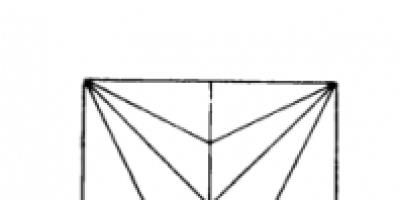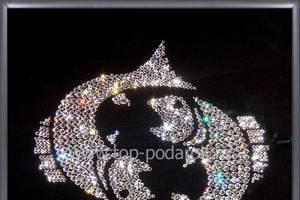Search for traces of blood on various surfaces, as well as the instruments for committing a crime - this is one of the main tasks faced by employees of forensic centers and departments. However, traces of blood cannot always be identified visually. They can be washed out or have microscopic sizes, which requires the use of specific methods for searching for them, in particular ultraviolet light.
The second area of application of ultraviolet flashlights is the search for wounded animals by hunters following the blood trail. Because on vegetation or ground at night it is very difficult to replace.
How blood glows in ultraviolet light
When answering the question of whether blood glows in ultraviolet light, it should immediately be noted that this biological fluid does not fluoresce under the influence of UV rays. Blood completely absorbs the entire ultraviolet spectrum, becoming completely black. It is for this reason that on various specialized forums you can find negative reviews about flashlights (people expect it to start glowing) designed to search for blood. BUT the black color of blood is also a result. Because All other surfaces (grass, vegetation, soil, leaves) reflect ultraviolet light. Those. BLACK traces of blood will be clearly visible on the gray-blue-white surface of the forest. Therefore, you can answer YES, a UV flashlight can help you find a wounded animal. But not in the way many people expect after watching enough films. By the way, we will explain this below.
But how and why, in this case, is ultraviolet used to identify blood in criminology around the world?
In fact, blood identification is carried out using a special method, the essence of which is to treat the suspected places where traces of blood are present with a special composition - luminol. This organic compound is capable of reacting with hemoglobin, which leads to blue fluorescence. That is why blood treated with this composition glows in ultraviolet light. It is worth noting that this method makes it possible to detect even the smallest traces of blood that are washed away with cleaning agents, since it is almost impossible to completely erase them.
Another feature of searching for blood with ultraviolet light is the short-term irradiation of its traces. The fact is that UV irradiation destroys DNA in the blood, which makes it impossible to further study it. That is why, when a positive reaction is obtained, the effect of UV light on the blood is suspended, and its samples are taken for further laboratory research. 
The catalog of our online store presents a wide selection of professional forensic and hunting UV flashlights for detecting traces of blood. Each offered model is developed on the basis of original high-quality components and meets all modern standards. Wholesale supplies of flashlights to forensic centers and specialized laboratories are possible.
Ultraviolet is a part of the spectrum of electromagnetic radiation that is beyond the boundaries of our perception. In other words, invisible radiation. But not really. The light we see is limited to wavelengths between 380 nm and 780 nm (nanometers). The wavelengths of ultraviolet or ultraviolet radiation range from 10 nm to 400 nm. It turns out that we can still see ultraviolet light - but only a small part of it, located in a small interval between 380 and 400 nm.
All. Dry facts are over, interesting facts begin. The fact is that this barely visible radiation actually plays a huge role not only in the biosphere (we will definitely talk about this separately), but also in lighting. Simply put, ultraviolet helps us see.
Ultraviolet and lighting
Ultraviolet has found its main use in lamps. Electrical discharges cause the gas inside a fluorescent lamp (or compact fluorescent lamp) to glow in the ultraviolet range. In order to obtain visible light, a special coating of material is applied to the walls of the lamp that will fluoresce - that is, glow in the visible range - under the influence of ultraviolet radiation. This material is called a phosphor, and manufacturers are constantly working to improve its composition to improve the quality of visible light produced. That is why today we have a good selection of fluorescent lamps, which not only outperform conventional incandescent lamps in energy efficiency, but also produce light of an almost full spectrum that is quite pleasant to the eye.
What other uses can ultraviolet light have?
Exists whole line materials that can glow in ultraviolet light. This ability is called fluorescence and many organic substances have it. In addition to it, there is also the so-called phosphorescence - its difference is that the substance emits light with a lower intensity, but continues to glow for some time (often quite long - up to several hours) after the cessation of exposure to ultraviolet radiation. These properties are actively used in the manufacture of various “glow in the dark” objects and jewelry.
Fake makers have a question: How to minimal costs eliminate the glow of paper in ultraviolet light?
Most security products are made on papers that do not glow in a wide spectrum of UV radiation. Office papers have a very strong glow, as they undergo a chemical bleaching procedure. Papers not bleached and with high content cotton have minimal glow.
Among the available papers “for everyone” and widely used: XEROX “COLOTECH+ NATURAL WHITE”. Unfortunately, it comes with a density of only 100g/m and 120g/m.
This paper has a VERY SMALL GLOW, comparable to the paper from Fractal.
Let's consider a way to eliminate the glow of paper "on the knee".
What do we need:
1. Compressor.
From four atmospheres, with fine adjustment of the output pressure and the absence of supply pulsations, that is, the presence of a receiver on the compressor is mandatory. At home (in the sense apartment option) only a compressor for airbrushing is suitable.
I use this one, JAS-1203, with a 3 meter twisted hose:
Very quiet, slightly louder than a refrigerator, three-liter receiver, air filters with a moisture separator. Gains pressure up to 6 atmospheres and turns off, turns on when it drops to 4 atmospheres. Very good outlet pressure regulator. The cost is about 5000 rubles. JAS has the same one, JAS-1206, but with two cylinders, larger receiver and pressure, it is preferable, but it is louder.
2. Airbrush.
Why not a painting spray gun, autonomous or compressor? Airbrushes are “sharpened” for very, very liquid paint diluted with alcohol. Airbrushes use methods of mixing paint with air that differ from classical ones. U electric spray gun there is no receiver, so very high pressure pulsation and pressure is NOT ENOUGH for fine atomization. For us, the formation of individual splashes is unacceptable, as they will look like black blots on a gray background under UV.
For an airbrush, a 0.7-1 mm nozzle is required. Standard usually costs 0.35 mm (you can work, but not comfortably and for a long time)
Very good airbrushes from JAS, they cost pennies, good quality and reliability, they are copies of Japanese ones with a price much lower, about 1000-2000 rubles.
I'm using JAS-1131. Of the minuses: small container for paint. It’s better to take JAS-1156 (that’s why I often blow out paper with an old Korean “nou name” pistol-type airbrush)
3. "Paint"
As a base we will use an anti-tanning spray with a very high degree of protection: “GARNIER Ambre Solar SPF 50+”.
Don’t even try to experiment with others, this one is “one of a kind.”
Does not leave greasy marks and dissolves very well in alcohol. It does not reflect UV radiation no worse than titanium dioxide (titanium white), but unlike it it covers the paper very well and evenly, dissolves in alcohol, does not settle in the solution for a very long time, has a very fine fraction, turns yellow less immediately and after heating. Since it is diluted with alcohol, it dries very quickly, it does not saturate the paper and, as a result, low consumption. Waterproof, ideal for post printing with pigment.
Cost: about 600 rubles per 200 ml (there are also SPF 20+ and 30+, but they contain 2-3 times less active substance, and the cost is comparable).
DO NOT ATTEMPT TO DILUT WITH WATER!!!
Looks like that:
We dilute with alcohol (you can immediately in an empty, washed and dried plastic container: 200 ml of ethyl alcohol, 200 ml of Garnier. Shake the mixture thoroughly (actively shake the closed bottle for a minute). I pour the finished bottle into a container of 0.5 isopropyl alcohol because the neck The size of the syringe is 20, it is plugged with a syringe and does not evaporate. It is convenient to take the sample with a syringe with a piece of tubing from a dropper attached.
It looks something like this. On the Snow Maiden I applied stripes using the prepared composition.
4. UV lamp.
The most convenient way to use it is at the checkout. Firstly, this is how your products will most likely glow in real life. Secondly, the power is not very high, it won’t hurt your eyes and the process can be controlled.
I have a sheet of plywood at an angle of 20 degrees, covered with parchment, and a UV lamp on top.
Like this:
We connect the airbrush, turn on the compressor, set the operating pressure depending on the airbrush and its settings from 2 to 6 atmospheres. On the airbrush we set the maximum air supply and maximum paint supply. We fill the container, turn on the ultraviolet light for control and off we go.
I “painted” matte Lomond 90 g/m. As an example, here is a photo of a “painted” sheet and a clean sheet. In daylight, the differences are “necessary”. The paper acquires a natural shade and the lightest extra. matte like state sign papers. In the small container on the airbrush there is a plus-one refill, just enough for an A4 sheet with very good “darkness” characteristics.
In terms of printing properties, the finished paper can only benefit from an increase in pigment saturation when high temperature. When laminating or running cleanly through lamellas with min. temperature for film lamination of 100 microns - no change.
Print on top ultraviolet paints only after COMPLETE drying!!! Otherwise, the UV paint glows well, but loses its color saturation.
If there are husks, then you can roll undiluted Garnier through a 60-100 mesh, but then you probably already know how to cheaply kill the UV glow on the husks.
PS: There is no need to dilute the holivar. Key glory: “on the knee” and “acceptable result”. In REAL “production”, REAL “masters” use different materials, and the technologies are completely different.
Good luck to all!
Glory.
SPS: Some kind of mistake with codes. To view in full format, click on the photos themselves, not on the view buttons.
The ultraviolet flashlight appeared on sale recently, but has already gained wide popularity among specialists. The device operates on LEDs and allows you to see in its light beam something that the human eye, not armed with technology, cannot distinguish. By pointing such a flashlight at an object of interest, you can see many unexpected things. The UV spectrum of the flashlight's radiation opens up to you an exciting world of objects and phenomena never seen before. The device is produced in models of various variations: pocket, key rings, head-mounted, stationary.
What is it needed for
Why do you need an ultraviolet flashlight? This question often arises among users unfamiliar with the magical functions of this amazing device. Our eyes see only a limited spectrum of colors. Most useful and important information is beyond human vision. In order to identify color signs invisible to the human eye, a UV flashlight was created.
More recently, scientists have developed it with special properties. This is a substance that human vision cannot distinguish. It is worth pointing the light beam of an ultraviolet flashlight at it, and all the drawings, pictures and texts applied using fluorescent paint immediately come to life. Everything becomes visible, just like ordinary objects.  Ultraviolet glow
Ultraviolet glow

Expert opinion
Alexey Bartosh
Ask a question to an expertThe ultraviolet light beam is also invisible to human eyes. By pointing it at objects, you can see the almost invisible. Having purchased an ultraviolet flashlight, its owner can profitably use it as a detector to identify various substances, phenomena and objects that are sensitive to UV radiation.
What can be seen in the rays of an ultraviolet flashlight:
- Banknotes issued by the government have many security features. These include: special fibers, watermarks, special printing, errors, effects, special inks, metallized stripes. This list can be continued indefinitely - so many security methods are used in the manufacture of banknotes. Most security signs glow under certain wavelengths of ultraviolet light. Checking money becomes simple matter. Every day you receive a lot of bills in the process of working in a trade, in a market or in a market, you need such detectors. Of course, you should prepare well by studying all the features of banknotes. Modern counterfeiters have phenomenal knowledge in the field of chemistry and physics. Today's specialists in counterfeiting banknotes effectively forge even the most complex security, which not every expert and criminologist can recognize.
- Production workers and drivers Vehicle They know well how difficult it can sometimes be to find a leak of working fluid from a car, component, or mechanism. Diagnostics is carried out by adding fluorescent paint to the working fluid. The location of the leak immediately becomes visible when you point the beam of an ultraviolet flashlight at it. Car enthusiasts also check anti-theft markings using this method.
- Powerful ultraviolet flashlights are successfully used in geology and speleology. Ultraviolet rays reveal inclusions of valuable minerals in rocks. In a similar way effectively study fossils and search for amber, which is clearly visible in the light of an ultraviolet flashlight. For serious searches, you should arm yourself with a professional flashlight, which costs more than pocket models.
- Many enterprises of the military-industrial complex and others use protective markings on their products. These marks become visible only when exposed to the beam of an ultraviolet flashlight directed at them. In such beams you can read inscriptions made with special invisible markers like Edding.
- Hunters really appreciate the ultraviolet flashlight and are happy to buy it. A wounded animal leaves blood stains on its trail. Blood perfectly absorbs ultraviolet rays. By pointing the light of an ultraviolet flashlight at the trail, the hunter clearly sees spots that are darker on any background. Capturing a wounded animal becomes much easier.
- Traces of various biological fluids from the human body, for example, traces of sperm, saliva, sputum from coughing, are clearly visible in the beam of an ultraviolet flashlight. The work of experts involved in the fields of traceology and forensics is greatly facilitated with this device.
Checking banknotes with an ultraviolet flashlight
Antique coats of arms and marks found on the carbine using an ultraviolet flashlight
Checking fluid leakage from a car engine with an ultraviolet flashlight
Traces of a criminal's biological fluids detected using an ultraviolet flashlight
Hunter searching for a wounded animal with an ultraviolet flashlight
Amber found using a UV flashlight
Many areas industrial production, scientific developments with implementation in real life ultraviolet lamps received invaluable help for their activities. In the light of ultraviolet radiation, many objects, phenomena, texts, invisible inscriptions or drawings that had been hidden from the eyes of mankind for many centuries became visible.
How to choose
Each UV flashlight has a different wavelength of light. The spectrum of ultraviolet radiation, capable of seeing hidden information, is also different for all flashlights. Flashlight designs are assembled with different numbers of LEDs. This serves as the main factor for determining the advisability of using an ultraviolet flashlight in various areas of production and personal use.
 Diagram of human vision perception of visible light and ultraviolet
Diagram of human vision perception of visible light and ultraviolet When choosing an ultraviolet flashlight, each user should rely on the following characteristics of these products:
- It is best to catch insects and determine biological fluids with devices with a capacity of 300-380 nanometers, nm.
- You can check banknotes with a device with a wavelength of 385 nm. It is also necessary Fluorescent Lamp BlackLight.
- The invisible marking will become visible at a wavelength of 385-400 nm. You need a powerful ultraviolet flashlight.
- For simple entertainment, a pocket ultraviolet flashlight or keychain is enough. You can read inscriptions made with fluorescent paint in nightclubs using any of them.

Expert opinion
Alexey Bartosh
Specialist in repair and maintenance of electrical equipment and industrial electronics.
Ask a question to an expertIt is necessary to purchase an ultraviolet flashlight for a specific purpose. What can be seen with one device will not be visible with another. It is necessary to study the subject matter in advance and find out all its physical and chemical characteristics.
How to determine the wavelength of a flashlight's UV radiation
You need to take a 5,000 ruble banknote from 1997 and point an ultraviolet flashlight at it.
A flashlight with a wavelength of 365 nm will highlight all protective UV elements. The glow is pale white.  Checking the authenticity of a 5,000 ruble banknote with an ultraviolet flashlight with a wavelength of 365 nm
Checking the authenticity of a 5,000 ruble banknote with an ultraviolet flashlight with a wavelength of 365 nm
A flashlight with a wavelength from 375 nm to 385 nm will highlight all the protective UV elements except the red striped oval on the right side of the bill. The glow is pale purple.  Checking the authenticity of a 5,000 ruble banknote with an ultraviolet flashlight with a wavelength of 375 nm
Checking the authenticity of a 5,000 ruble banknote with an ultraviolet flashlight with a wavelength of 375 nm
A flashlight with a wavelength from 395 nm to 405 nm will highlight only the security fibers of the banknote. The glow is bright purple.  Checking a 5,000 ruble banknote with an ultraviolet flashlight with a wavelength of 395-405 nm
Checking a 5,000 ruble banknote with an ultraviolet flashlight with a wavelength of 395-405 nm
With your own hands
Any craftsman who can hold a screwdriver in his hands can make an ultraviolet flashlight on his own at home. It is necessary to perform actions in the following sequence:
- Buy a standard one - usually there are 8 pieces.
- Separately buy 8 ultraviolet LEDs, identical in size. Wavelength 360-400 nm, current 500-700 mA.
- Remove the protective glass.
- Remove regular LEDs.
- Solder purchased LEDs into the circuit for UV illumination.
- Insert the protective glass in its original place.
 LED UV 395 nm, 10 W, 45 mil, current 900 mA
LED UV 395 nm, 10 W, 45 mil, current 900 mA  LED flashlight with glass removed
LED flashlight with glass removed  Resoldering diodes, removing conventional ones, installing ultraviolet ones
Resoldering diodes, removing conventional ones, installing ultraviolet ones The ultraviolet flashlight is ready. You can surprise your family, friends, and acquaintances at a party with it. In the light of the device you can see a lot of interesting things: dyes and makeup, security information on banknotes, detect cracks, invisible inscriptions on devices, car engines. Good luck in your creativity!








